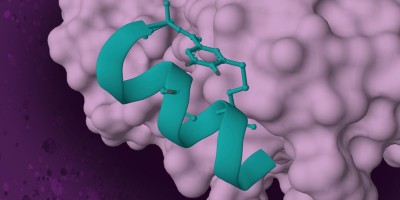The Chemical Weapons Convention has a unique Scientific Advisory Board that ensures it keeps pace with science, and its implementing body is prepared for future challenges. It is a model that could be usefully applied to other disarmament treaties.

References
Chemical Weapons Convention (OPCW, 2024); https://www.opcw.org/chemical-weapons-convention.
Report of the Scientific Advisory Board on Developments in Science and Technology to the Fifth Special Session of the Conference of the States Parties to Review the Operation of the Chemical Weapons Convention (OPCW, 2023); https://www.opcw.org/sites/default/files/documents/2023/02/rc5dg01%28e%29.pdf.
Response to the Report of the Scientific Advisory Board on Developments in Science and Technology to the Fifth Special Session of the Conference of the States Parties to Review the Operation of the Chemical Weapons Convention (OPCW, 2023); https://www.opcw.org/sites/default/files/documents/2023/02/rc5dg02%28e%29.pdf.
Report of the Scientific Advisory Board on Developments in Science and Technology for the Fourth Special Session of the Conference of the States Parties to Review the Operation of the Chemical Weapons Convention (OPCW, 2018); https://www.opcw.org/sites/default/files/documents/CSP/RC-4/en/rc4dg01_e_.pdf.
Understanding Regarding the Aerosolised Use of Central Nervous System-Acting Chemicals for Law Enforcement Purposes (OPCW, 2021); https://www.opcw.org/sites/default/files/documents/2021/12/c26dec10%28e%29.pdf.
Education and Engagement: Promoting a Culture of Responsible Chemistry (OPCW, 2014); https://www.opcw.org/sites/default/files/documents/SAB/en/Education_and_Engagement-v2.pdf.
Convergence of Chemistry and Biology: Report of the Scientific Advisory Board’s Temporary Working Group (OPCW, 2014); https://www.opcw.org/sites/default/files/documents/SAB/en/TWG_Scientific_Advsiory_Group_Final_Report.pdf.
Revill, J., Anand, A. & Persi, G. P. Exploring science and technology review mechanisms under the Biological Weapons Convention. UNIDIR https://doi.org/10.37559/SECTEC/2021/SandTreviews/01 (2021).
Author information
Authors and Affiliations
Corresponding author
Ethics declarations
Competing interests
The authors declare no competing interests.
Additional information
Publisher’s note Springer Nature remains neutral with regard to jurisdictional claims in published maps and institutional affiliations.
Related links
Education and Outreach: https://www.opcw.org/about/subsidiary-bodies/advisory-board-education-and-outreach
OPCW: https://www.opcw.org
Scientific Advisory Board: https://www.opcw.org/about/subsidiary-bodies/scientific-advisory-board
Spiez CONVERGENCE: https://www.spiezlab.admin.ch/en/home/meta/refconvergence.html
Rights and permissions
About this article
Cite this article
Clapham, S., Hotchkiss, P.J. Robust scientific advisory mechanisms future-proof disarmament treaties. Nat Rev Chem 8, 231–233 (2024). https://doi.org/10.1038/s41570-024-00594-2
Published:
Issue Date:
DOI: https://doi.org/10.1038/s41570-024-00594-2
- Springer Nature Limited


